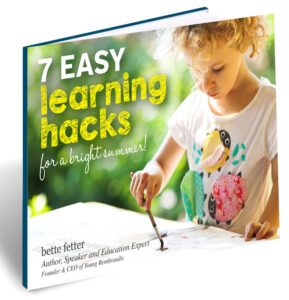As parents, we want the best for our children at home and at school. Their success in the classroom is directly affected by the way their brain processes information. However some students are not finding the success they deserve because they’re right brain, visual thinkers.
While we use both sides of our brain in almost everything we do, each side of our brain has separate and distinct ways of seeing and thinking. The left side of us is linear, logical and orderly. The right side of us is nonlinear, intuitive and may seem a bit scattered. The visual, nonlinear, big picture, creative, right brain side of us is the most misunderstood, undervalued and overlooked and yet it’s the side of us that inspires brilliance.
Children that are right brain dominant are visual thinkers. These visual learners are big picture, nonlinear, relational, conceptual thinkers and much more at home in the world of images than language. Visual thinkers need to see what they are learning and are often overwhelmed in language heavy classrooms. Their strong spatial skills give them a keen awareness of size, space and relationships, which can lead to giftedness in math and science. But these kids may struggle in school because they have a difficult time with lectures, memorization, computation and timed testing.
Here are some key attributes of right brain thinkers:
- Right brain dominants think, learn and remember with images.
- They learn best when they ‘see’ what they are learning.
- They’re conceptual, big picture thinkers that often miss the details.
- Right-brain thinkers struggle with organization and time management.
- They have good long-term, visual memory and poor short-term memory.
- Right-brain thinkers thrive when doing art and other creative activities.
- Right-brain thinkers like puzzles, Legos and three-dimensional play.
- Right-brain thinkers often struggle in traditional education settings
There are many ways to adapt teaching methods so our right-brain thinkers can be more successful. These students do best when information is presented visually, when they learn concept before details and when they can interact with what they’re learning. Right-brain thinkers don’t do well with timed tests, but school has tests, so it’s important to help them develop testing strategies, while also assessing them in ways more suited to how they learn. Right-brain thinkers need help developing organization and sequencing abilities and are more successful in classroom when they take notes, doodle to stay involved, and use color to help them remember.
As much as right-brain thinkers need help understanding and leveraging their unique abilities; left-brain thinkers will also benefit by getting to know how the right side of their brain can expand their possibilities.









